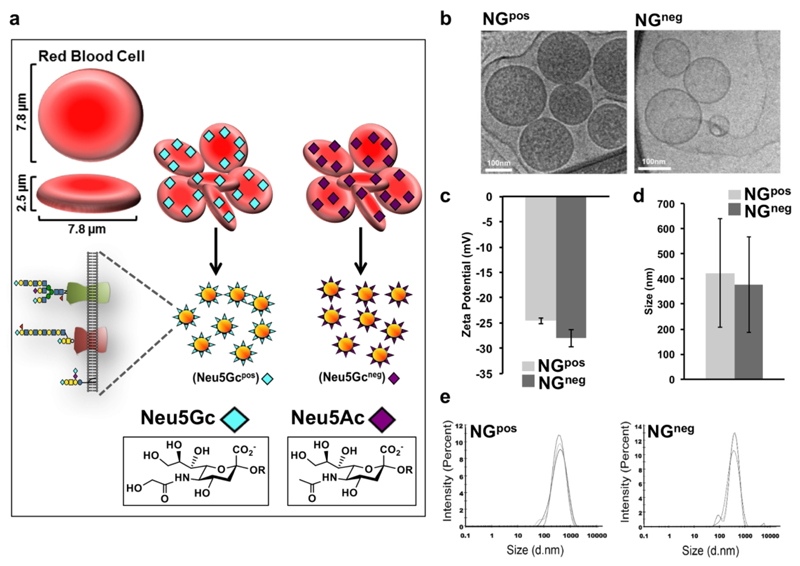Figure 1.
Physiochemical characterization of porcine-derived nano-ghosts (NGs). (a) Schematic representation of red blood cells (RBCs) and NGs prepared from RBCs of two porcine strains that express various Sia-containing glycoproteins with either terminal Neu5Gc (αGal-deficient strain; NGpos) or terminal Neu5Ac (Neu5Gc- and αGal-deficient strain; NGneg). (b) Transmission electron micrograph (TEM) analysis of NGpos and NGneg. Freshly prepared NGs were applied onto a plasma etched carbon grid in CryoPlungeTM 3 unit (Gatan Instruments) employing a double blot technique for 2 s, then plunged into liquid ethane and transferred under liquid nitrogen to cryo-TEM (FEI; Tecnai G2). Images were captured using a DigitalMicrograph software (Gatan) (representative of two independent experiments). (c) Zeta potential of freshly prepared NGs was measured. (d-e) Size of freshly prepared NGs was measured. NGs were diluted to 20 μg protein/ml (in ddH2O for Zeta potential, or PBS pH 7.4 for size) and measured in a Malvern Nano ZS Zetasizer (Each experimental result is an average of at least three independent measurements).

